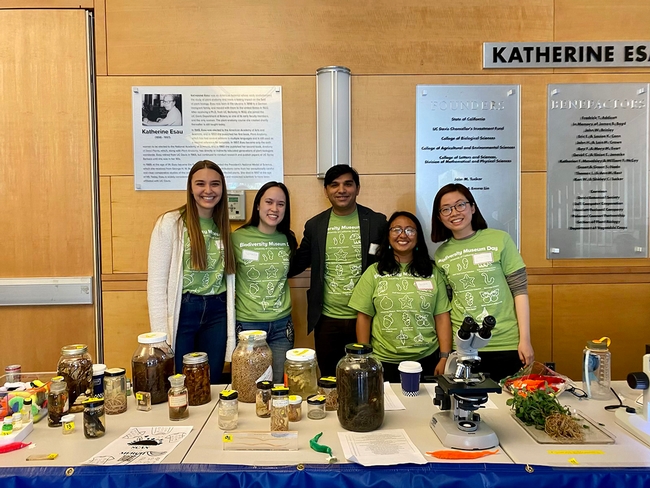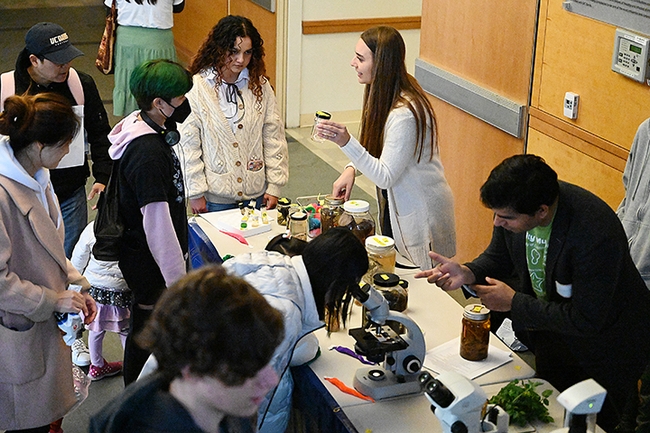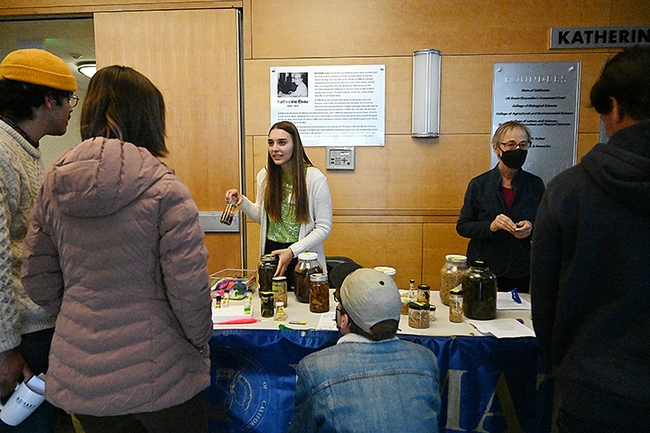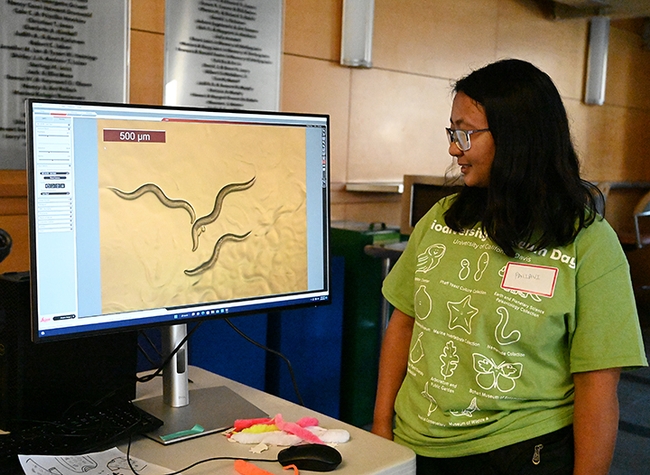- Author: Kathy Keatley Garvey
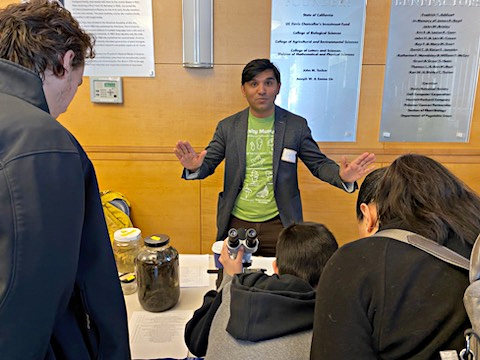
The Shahid Siddique laboratory was out in force on Saturday, Feb. 18 during the 12th annual UC Davis Biodiversity Museum Day.
The nematologists set up their display in the Katherine Esau Science Hall, formerly the Sciences Lab Building, and drew nearly 1000 visitors, the most ever.
“BioDiv Day went really well,” said Siddique, an assistant professor of nematology, UC Davis Department of Entomology and Nematology. “A lot of people took interest in getting information about dog heartworms and root-knot nematodes infecting tomatoes. Some people said that nematodes were their favorite stop for BioDiv Day. We had 906 visitors in total and a vast majority of them were kids with family.”
Participating with Siddique were his graduate students Alison Coomer, Veronica Casey, Pallavi Shakya, and Ching-Jung Lin, and professor emeritus Valerie Williamson of Plant Pathology.
The Siddique lab focuses on basic as well as applied aspects of interaction between parasitic nematodes and their host plants. "The long-term object of our research is not only to enhance our understanding of molecular aspects of plant–nematode interaction," Siddique says, "but also to use this knowledge to provide new resources for reducing the impact of nematodes on crop plants in California."
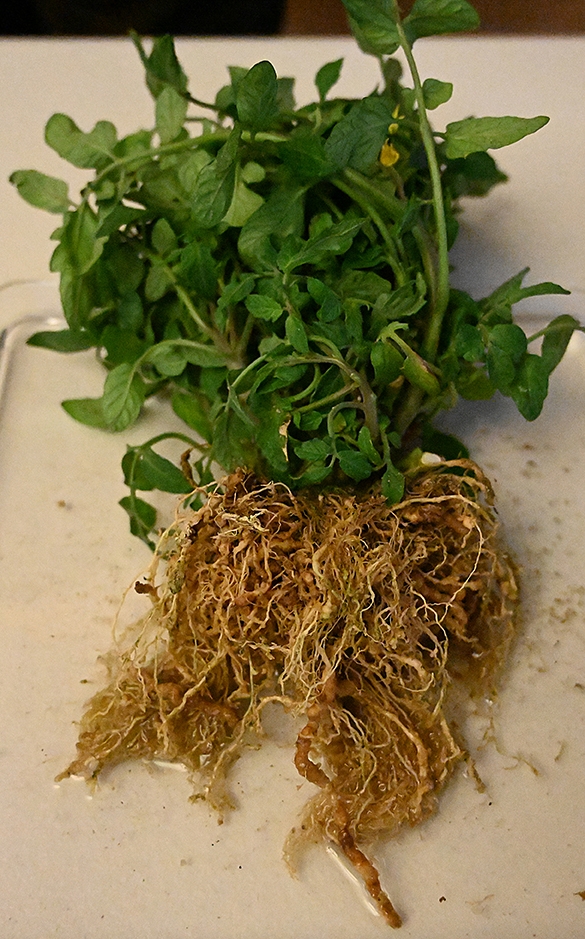
- Celery infected with root-knot nematodes
- Anisakis nematodes from a Minke whale stomach
- Heart of a dog infected with heartworms (Dirofilaria immitis)
- Parasitic nematodes (Baylisascaris transfuga) isolated from the stomach of a bear
- White-tailed deer eye infected with parasitic nematodes (Thelazia spp.)
- Sugar beet infected with root-knot nematodes
- Dog ascaris (Toxocara canis) cause of visceral larva migrans
- Common parasitic worms of human (Ascaris lumbricoides) cause of Ascaris isolated from human intestine
- Dog intestine infected with whipworms
- Horse stomach parasite community including 1) Parascaris 2) Tapeworms 3) Botfly larvae
- Yam infected with root-knot nematode
- Tomato root infected with root-knot nematode
- Adult raccoon roundworms
- Filarial nematodes (Onchocerca volvulus) cause of Onchocerciasis river blindness
- Zoonotic hookworms (Ancylostoma caninum)
- Ascaris lumbricoides (common parasitic worms of human)
- Tree swallow infected with Diplotriaena nematode
- Sugar beet infected with cyst nematode (Heterodera schachtii)
- Grape roots infected with Root-knot nematodes
- Mormon crickets infected with horsehair worms (Gordius robustus)
- Peach roots infected with root-knot nematodes
- Anisakis nematodes from fish intestine
- Hysterotahylaciun nematodes isolated from fish
- Pinworms isolated from human intestine
- Whipworms isolated from human Intestine
- Anisakis nematodes isolated from seals
- Adult dog heartworms
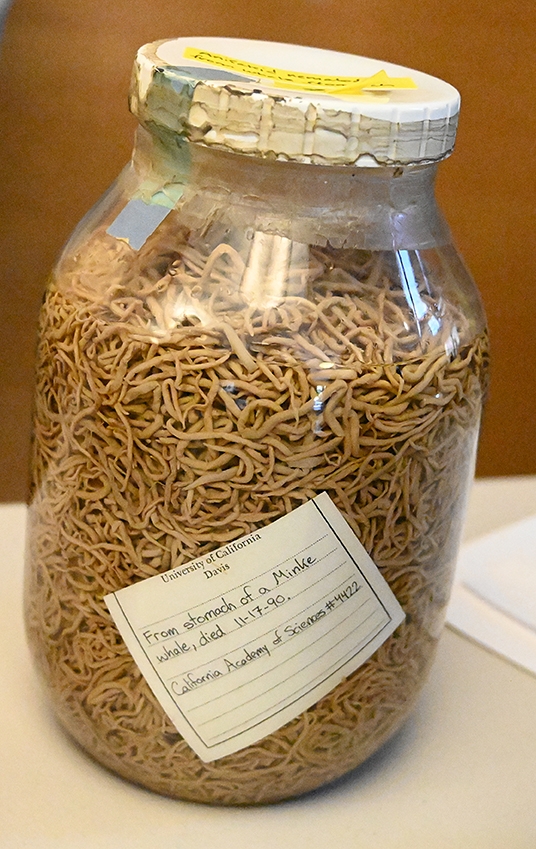
BioDiv Day, founded by the Bohart Museum, is traditionally held on Presidents' Day weekend. Some 3000 attended this year's event, estimated chair Tabatha Yang, education and outreach coordinator of the Bohart Museum. The "Super Science Day" is free and family friendly. Yang is encouraging donations to help pay expenses; access the UC Davis crowdfunding page.
The Esau Science Hall is newly named for UC Davis professor emeritus Katherine Esau, 1898-1997. Internationally known as one of the most influential plant biologists and professors in history, Esau is lauded for her pioneering work on plant anatomy and structure that laid the foundation for much of today's research in the field. She won the National Medal of Science awarded by then president George Bush.
Esau was born in Ukraine. Her family fled to Berlin after World War I and then emigrated to the United States. She joined the UC Davis faculty after receiving her doctorate in 1931. She was elected to the National Academy of Sciences in 1957, only the sixth woman to receive that honor. Following her retirement, she relocated to UC Santa Barbara in 1965. According to Wikipedia, she continued research well into her 90s, publishing a total of 162 articles and five books.
Esau died June 4, 1997 at age 99 in Santa Barbara. A New York Times article quoted Peter Raven, director of the Missouri Botanical Garden: "She absolutely dominated the field of plant anatomy and morphology for several decades. She set the stage for all kinds of modern advances in plant physiology and molecular biology."
In 1982, at age 84, Esau delivered her final UC Davis lecture, covering plasmodesmata. In 1988, she donated $648,000 to UC Davis to establish an endowment to fund plant research fellowships in perpetuity. As of 2020, the endowment's market value has increased by almost six times its original amount, standing at $3.7 million, according to a UC Davis news story.
